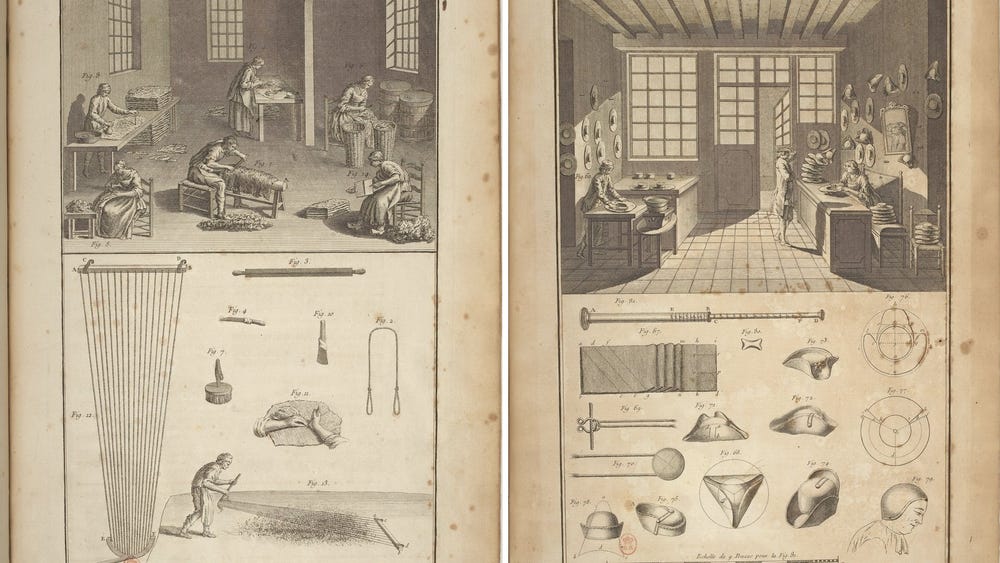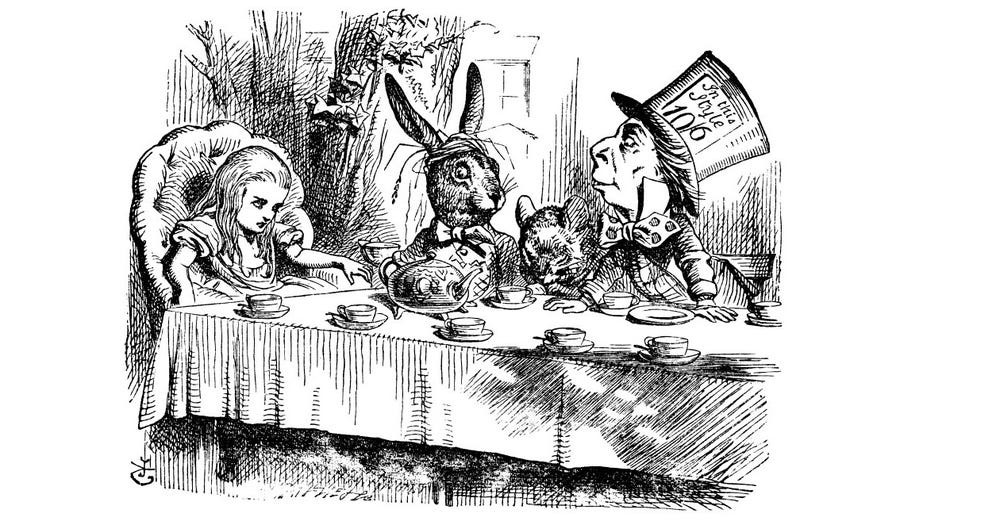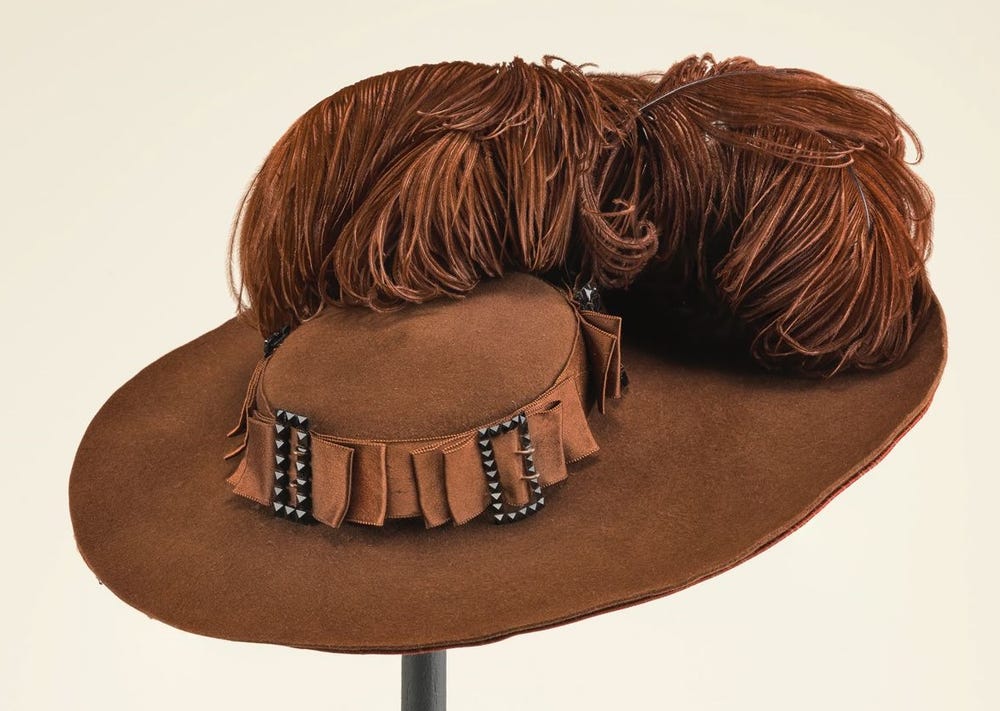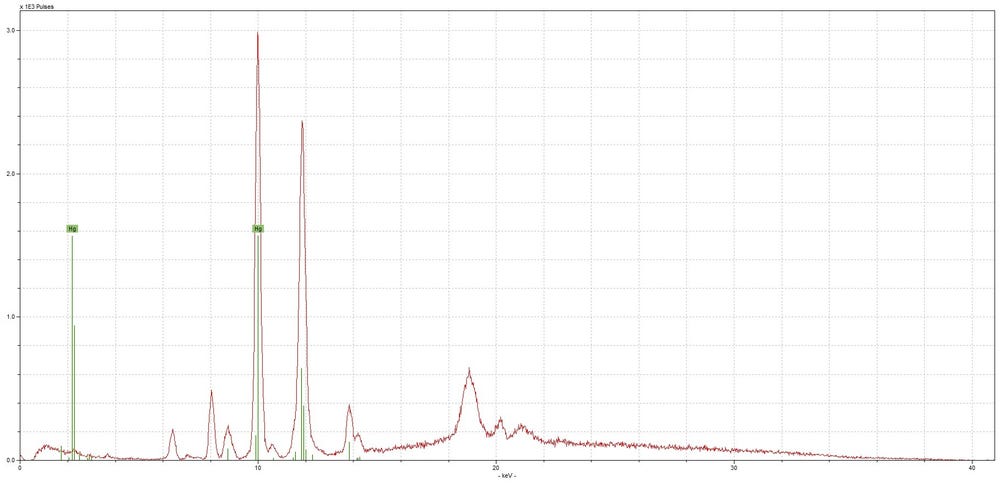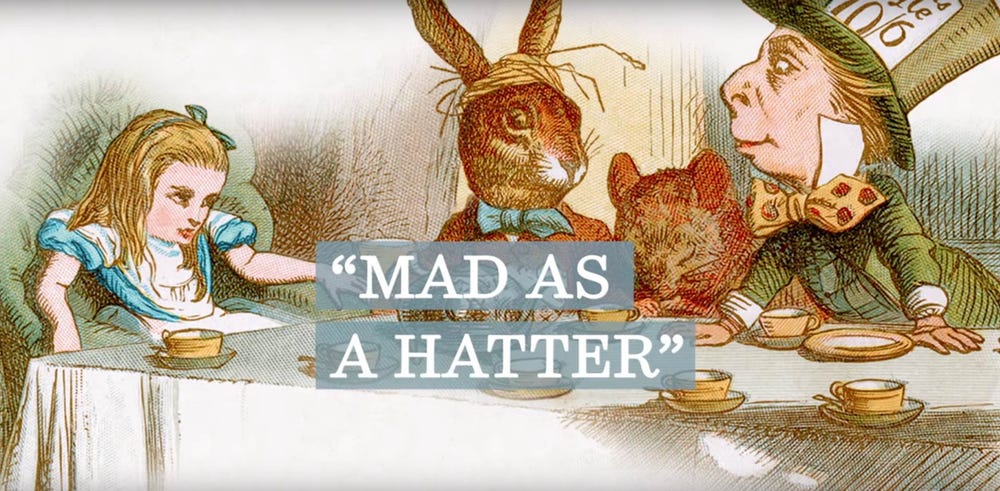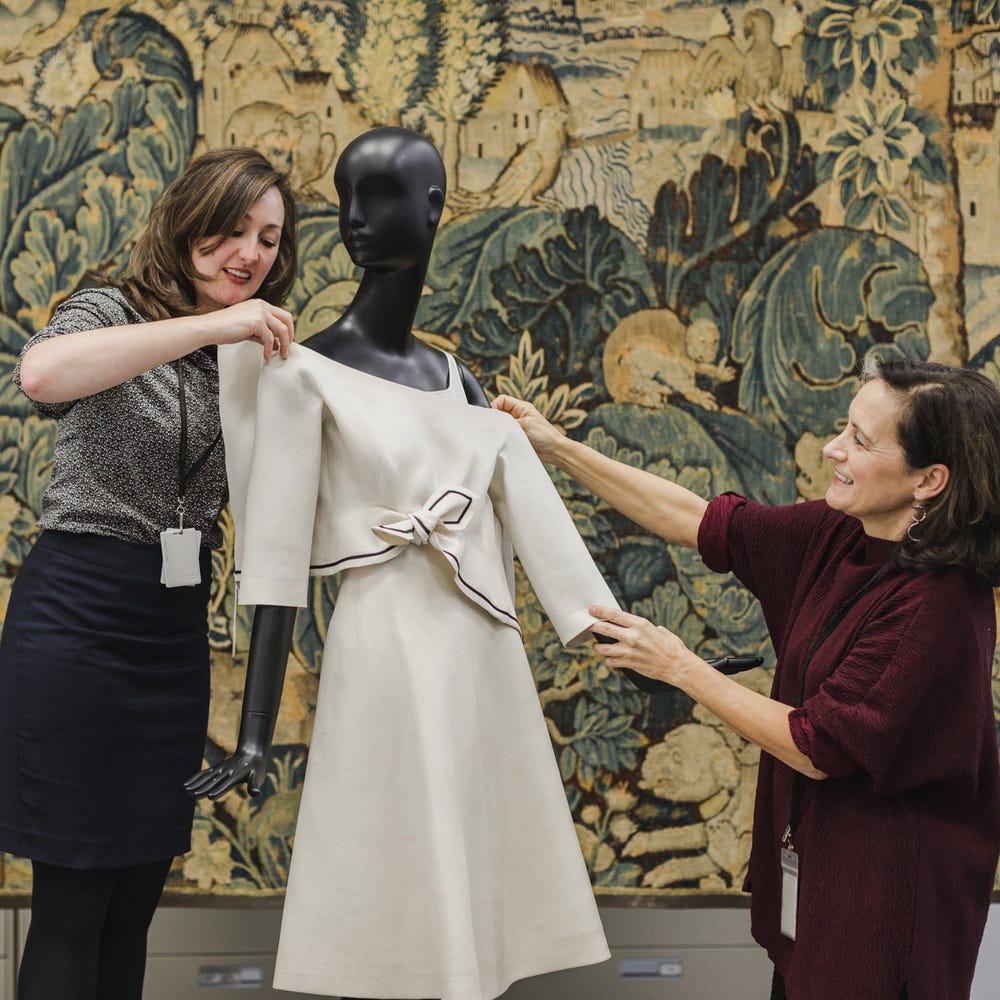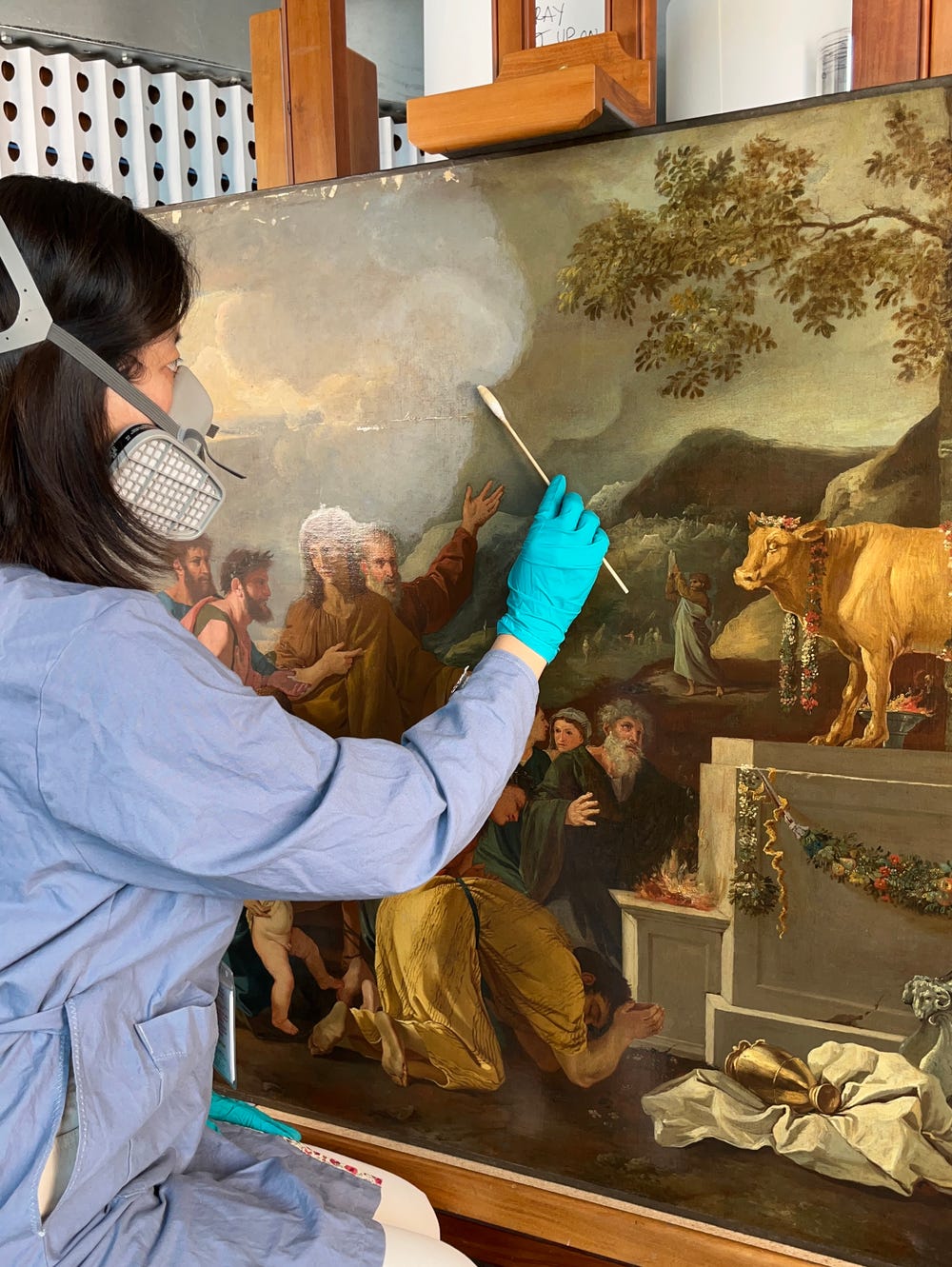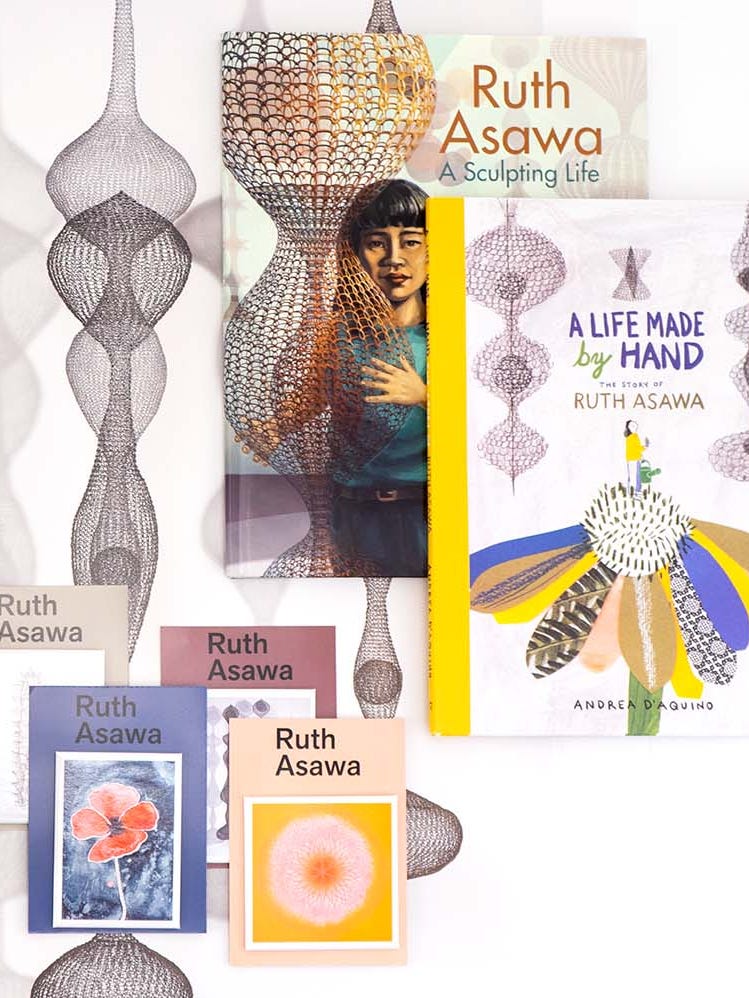Poisons Part I: The Mercurial World of Felt
By Laura L. Camerlengo and Anne Getts
July 19, 2017
Visitors to the Degas, Impressionism, and the Paris Millinery Trade may be surprised to learn that hat making was a dangerous business, due to the introduction of mercury to the process of preparing fur pelts in the seventeenth century. Fur was readied for use in both men’s and women’s hats through a process known as felting or carroting, in which animal hairs were removed from their hide, and exposed to heat, moisture, and mechanical pressure, causing them to mat together into felt. Prior to the seventeenth century, the skin and hair were separated using urine, but French hat makers discovered that mercury — first in the form of mercurial urine from hat workers who consumed mercury chloride to treat syphilis, and later in the form of the mercuric salts such as mercuric nitrate — made the hairs softest and most pliable, enabling them to felt together with greater ease. By the end of the seventeenth century, this process had spread to England as well.
Although mercury was useful in the formation of fur felt, prolonged inhalation of the mercury vapors that were released upon exposure to heat, or in some cases the ingestion of the element by workers hoping to further increase the pliability of their felts by putting the mercury-containing materials in their mouths, resulted in mercurial or so-called “mad hatter” disease. This disease affected the workers’ gastrointestinal and central nervous systems. Notable symptoms included tremors, irritability, timidity, and mental instability. The condition eventually gave way to the well-known proverbial expression, “mad as a hatter,” by the second quarter of the nineteenth century.
Alice in Wonderland, John Tenniel, 1865
Unfortunately, fans of the so-called “Mad Hatter” from Lewis Carroll’s famous novel, Alice in Wonderland (1865), may be disappointed to learn that the eccentric character does not display the typical behaviors associated with mercury poisoning, such as extreme shyness, lack of self-confidence, and a desire to remain unnoticed. Instead, this colorful extrovert was likely inspired by Theophilus Carter (1824 – 1904), an eccentric Oxford tradesman, rather than an ill hat maker.
Michniewicz-Tuvée (designer), French, circa 1868–circa 1905 Woman's hat, ca. 1892 France, Paris Rabbit felt; ostrich feathers; silk satin ribbon; faceted jet buckles 4.4 cm (1 3/4 in.) crown height; 32.4 x 32.1 cm (12 3/4 x 12 5/8 in.); 36.8 cm (14 1/2 in.) circumference Gift of Mrs. Walter Haas
With this history in mind, it should come as no surprise that elemental testing found that a hat from the collection of the Fine Arts Museums of San Francisco, and included in Degas, Impressionism, and the Paris Millinery Trade, contained mercury in its felt. This woman’s hat by the milliner Michniewicz-Tuvée is a variant of the low-crowned, wide-brimmed hats typical of the last quarter of the nineteenth century. It has an elliptical brim, a low crown trimmed with brown satin ribbon and jet buckles, and a flourish of large ostrich feathers on the back.
Spectrum showing mercury peak
Understand the origin of “Mad as a Hatter,” and the complicated beauty of the hats in Degas, Impressionism, and the Paris Millinery Trade.
Sources
Bigham, Gary, Betsy Henry, and Brad Bessinger. “Mercury – A Tale of Two Toxins.” Natural Resources & Environment 19, no. 4 (Spring 2005): 26- 30, 71.
Kitzmiller, Dr. Kathryn J. “The Not-So-Mad Hatter: Occupational Hazards of Mercury.” CAS: A Division of the American Chemical Society, http://www.cas.org/news/insights/science-connections/mad-hatter, accessed April 26, 2017.
Martin, Graham, and Marion Kite. “CoSHH Does Work.” V&A Conservation Journal 46 (2004): 17 – 19.
Morris, Roisin. “Not just a load of old hat: the preparation of a hat exhibition for display and transport.” Journal of the Institute of Conservation 34, no. 1 (2011): 66 – 79.
Waldron, H.A. “Did the Mad Hatter have mercury poisoning?” British Medical Journal 287 (December 1983): 24 – 31.
Wedeen, Dr. Richard P. “Were the hatters of New Jersey ‘Mad’?” American Journal of Industrial Medicine 16 (1989): 225 – 233.
Text by Laura L. Camerlengo, assistant curator of Costume and Textiles, and Anne Getts, Mellon assistant textiles conservator.
